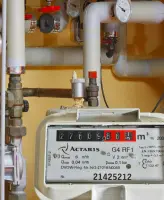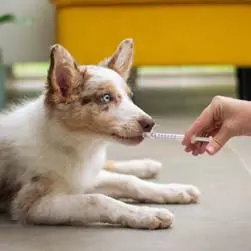Posted on: 21/11/2022
Category: Pet
Like you, your pet is an individual. For this reason, pet insurance needs can vary from one pet to another. In this article we will explore the diverse types of pet insurance available to you, to help you decide which level of coverage works best for you and your furry friend.
Lifetime cover:
A lifetime cover pet insurance policy provides cover for the entirety of a pet’s lifespan for every year the policy is renewed. This policy will cover a pet’s vet costs for injury and illness for a pre-agreed amount each year. This amount resets at every yearly point of renewal.
This level of cover works well for a pet who may be likely to develop an ongoing health condition. The extensive cover of lifetime pet insurance makes it a more expensive option, with the associated insurance premiums adjusting every year against vet costs and the age of the insured pet.
Maximum-benefit/per condition cover:
For a maximum-benefit/per condition pet insurance policy, the insurance provider pays out a fixed amount per health condition until the agreed maximum claim limit has been reached.
Once said limit has been reached for a particular health issue or injury, the insured pet will not be covered for that specific illness or injury again and you will need to pay out of pocket for any further costs that arise.
Maximum-benefit insurance does not come with a time limit. Therefore, until the claim limit is reached your pet will remain covered for a particular condition or injury for as long as the policy is kept live, and monthly premiums are paid.
Maximum-benefit pet insurance can help to cover the costs of any long-term treatment, such as medication, for an issue that has been diagnosed within the policy term.
Time-limited cover:
Time-limited cover works in primarily the same way as a maximum benefit; a pet is covered for an agreed amount per condition. However, you will only have 12 months to claim for any condition or injury. Once the 12 months are completed or the max claim amount is reached before the 12 months, you will not be able to claim for the same issue again.
It is important to note that the 12-month period for the claim will start from the date of injury/ onset of illness or the start date of treatment (usually determined in the small print.) If the policy date lapses before the 12-month period of the claim, the insurance policy would need to be renewed for coverage to continue for the health issue or injury.
Time-limited cover can be a great option for a short-term illness or injury.
Accident-only cover:
Accident-only pet insurance will only cover the costs associated with an accident-related injury. There will often be an agreed price cap, or coverage for the claimed injury may only last for the 12-month policy term.
As accident-only insurance is less comprehensive than the other insurance types available as mentioned above, it can bet the best option if you are seeking cheap pet insurance and it suits your individual needs. It is also a good option for older pets who may be difficult to insure for illness.
In summary:
Depending on your individual circumstances, a particular type of pet insurance will work better for you versus the other options available. We hope this article has helped you determine which type of pet insurance to move forward with.
If you are ready to begin the process of purchasing pet insurance, you can view and compare all pet insurance deals available to you here.








